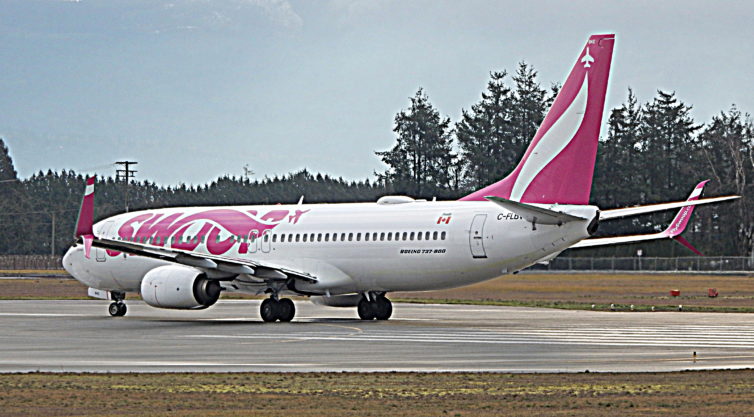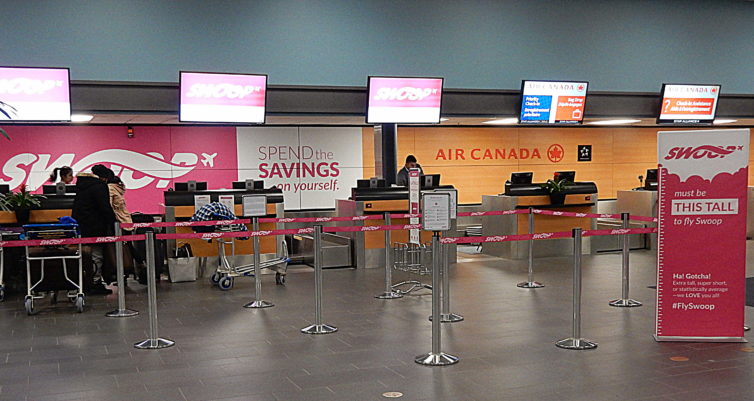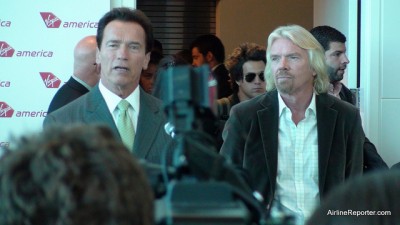
With their new low-cost subsidiary, Swoop, connecting secondary markets, WestJet is able to focus on its joint venture with Delta – Photo: John Jamieson
Some Low-Cost Context
As far as I can remember, Canadians have complained about the cost of domestic air travel. Stuck in an increasingly permanent duopoly, Air Canada and WestJet have been without significant competition for the past 15 years. When JetsGo ceased operations in 2005, the domestic market was handed over to two carriers with little interest in changing the status quo. Moreover, with the ability to control prices and adjust capacity, Canada’s two flag carriers have been able to stifle their competition. Additionally, as a result of the duopoly, the barrier to entry for new market entrants has gone up significantly.
Part of the problem lies in Canada’s geography. With a population smaller than Tokyo spread over an area larger than the United States, it’s no wonder that airlines have struggled to succeed in Canada. While there is considerable traffic between the major urban areas (Vancouver, Calgary, Toronto, and Montreal), there is very little flow between Canada’s smaller cities. This makes profitability a major struggle for new market entrants, especially when the major routes are dominated by Air Canada and WestJet.

Swoop offers its customers landside check-in; however, many passengers make use of their mobile app – Photo: John Jamieson
Start of the Transition
However, things may be about to change. Three carriers (Rouge, Flair, and Swoop) are currently offering low-fare travel options and a fourth, Canada Jetlines, is on the way. Each with their own identity, the three existing carriers have thus far managed to stay afloat in Canada’s notoriously turbulent market. But for how long? That remains to be seen. With low-cost travel finally taking off, it’s worth taking a closer look at how they’ve managed to attract and maintain business. We’ll be taking a look at their origins, cost structure, and the quirks which have kept them in business and, later in my story, I’ll be including my brief interview with Swoop President Steven Greenway.

Sir Richard Branson and California Governor Arnold Schwarzenegger speaking at San Fransisco Airport on Tuesday (I was told that the guy to Branson's back-right is someone famous, I don't know...)
The last few days I have been surrounded by all things Virgin America while celebrating their first international route from San Fransisco (SFO) and Los Angeles (LAX) to Toronto (YYZ). Tomorrow I will post about the fun stuff that happened, but first let’s talk about some interesting news Virgin America announced while at SFO on Tuesday: they are planning to fly into Mexico.
The send off in San Fransisco was quite the scene. There were decorations, food, pink champagne and a few security guards to protect the special guests.
Not only were many of Virgin America’s leadership there, including CEO David Cush, but also Virgin’s leader Sir Richard Branson, San Fransisco Mayor Gavin Newsom and California Governor Arnold Schwarzenegger. They were all there to celebrate Virgin’s growth, new route to Toronto and creation of jobs in California and San Fransisco.
’œSan Francisco is proud to have Virgin America as its hometown airline,’ said Mayor Newsom. ’œOver the last few years, they’ve created hundred of new jobs, lowered fares and helped make SFO one of the nation’s few growing airports.’
Early on, Virgin America was excited to announce they are looking to fly into Mexico. The airline filed with the Department of Transportation on Tuesday to fly from SFO to Los Cabos and from LAX and SFO to Cancun. Virgin America hopes to start the flights this winter. The airline states after they get these flights up and running, they will concentrate more on creating more domestic routes.
“Today is a great day for airline competition, for our teammates and for travelers,” said Virgin America President and CEO David Cush. “When more airlines compete, consumers win with lower fares and better service. At a time when most airlines are contracting and consumers expect less and less, we’re proud to be growing, operating responsibly and offering travelers a very different kind of flight experience.”
Virgin America is still a relatively new airline, starting operations in 2007. Although the airline wears the “Virgin” name, and is the brain-child of Sir Richard Branson, he only has a 25% stake in the airline. By law, no more than 25% of a U.S. airline may be owned by foreign interests. They provide low fares, but amazing amenities. They have the best domestic in-flight entertainment system I have experienced and have a very fun, party-like atmosphere on board their planes.
A bit more:
* Rough video I streamed live from my iPhone
* Video of Branson and Schwarzenegger on the flight from LAX to SFO


